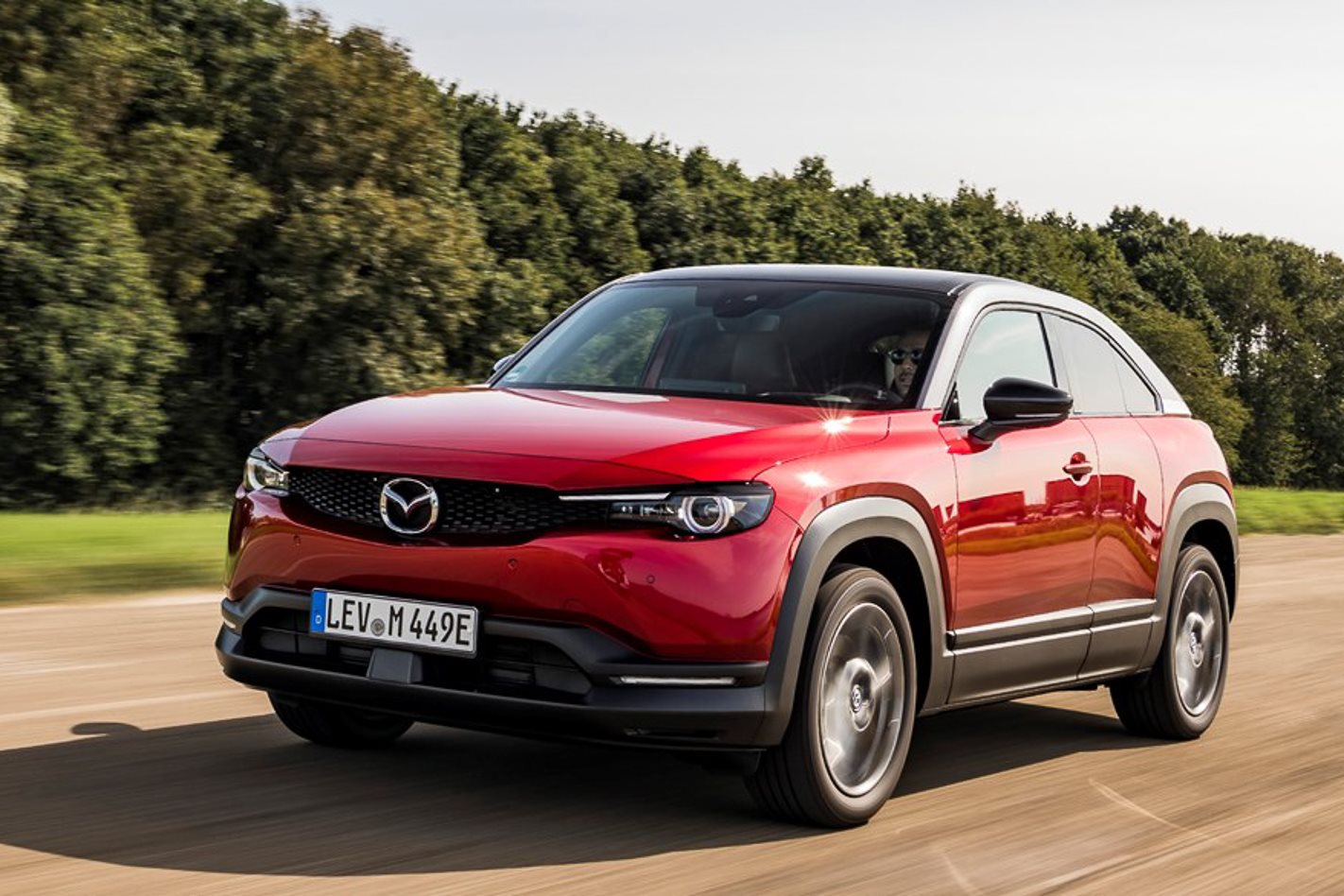
Mazda might be best known for its rotary engine expertise – or more recently its petrol-come-diesel SkyActiv-X tech – but the Japanese company is finally ready to release its first mass production EV.
Revealed during the Tokyo Motor Show in 2019, it’s called the MX-30, and it’s now available in Europe. We’ll have to wait for full confirmation that it’s coming Down Under, possibly late 2021.
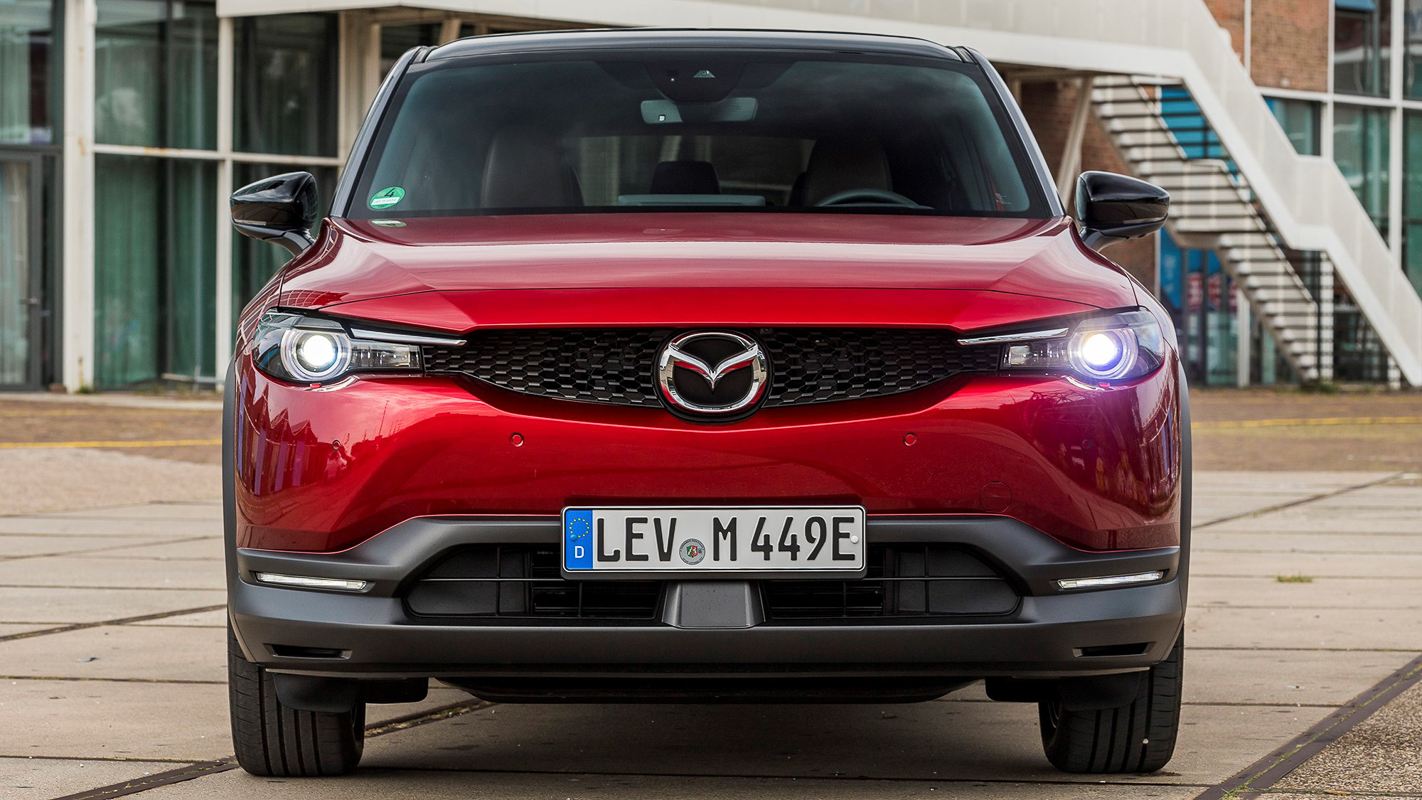
So what’s the first electric Mazda like to drive? Keep reading to find out why Mazda’s new EV is a different take on the electric car, and why its success could hinge on a test drive rather than a simple spec comparison.
What’s the spec, then?
Initially, the MX-30 comes as one flavour, starting with a relatively small 35.5 kWh battery. That’s as compact as the Honda e’s power source, but this is a much larger, family-friendly small crossover. There are three trim levels and all are generously equipped compared to rivals.
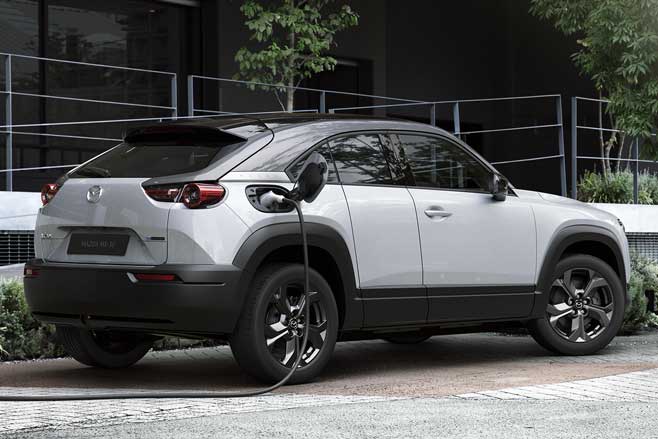
The motor produces a little over 100kW, and just under 270Nm of torque – not necessarily the numbers you’d associate with Mazda’s sportier MX brand, but the MX-30’s 1,645kg kerb weight is not that far off conventional crossovers of a couple of years ago.
It’s bad form to talk about your birthday at Christmas, but when you actually look under the bonnet at the motor, there’s an astounding amount of empty space – perhaps there’s more to come? You could comfortably fit a person in the room left behind when the CX-30 derived chassis is stripped of such fripperies as gearboxes, exhaust pipes and things to keep emissions away.
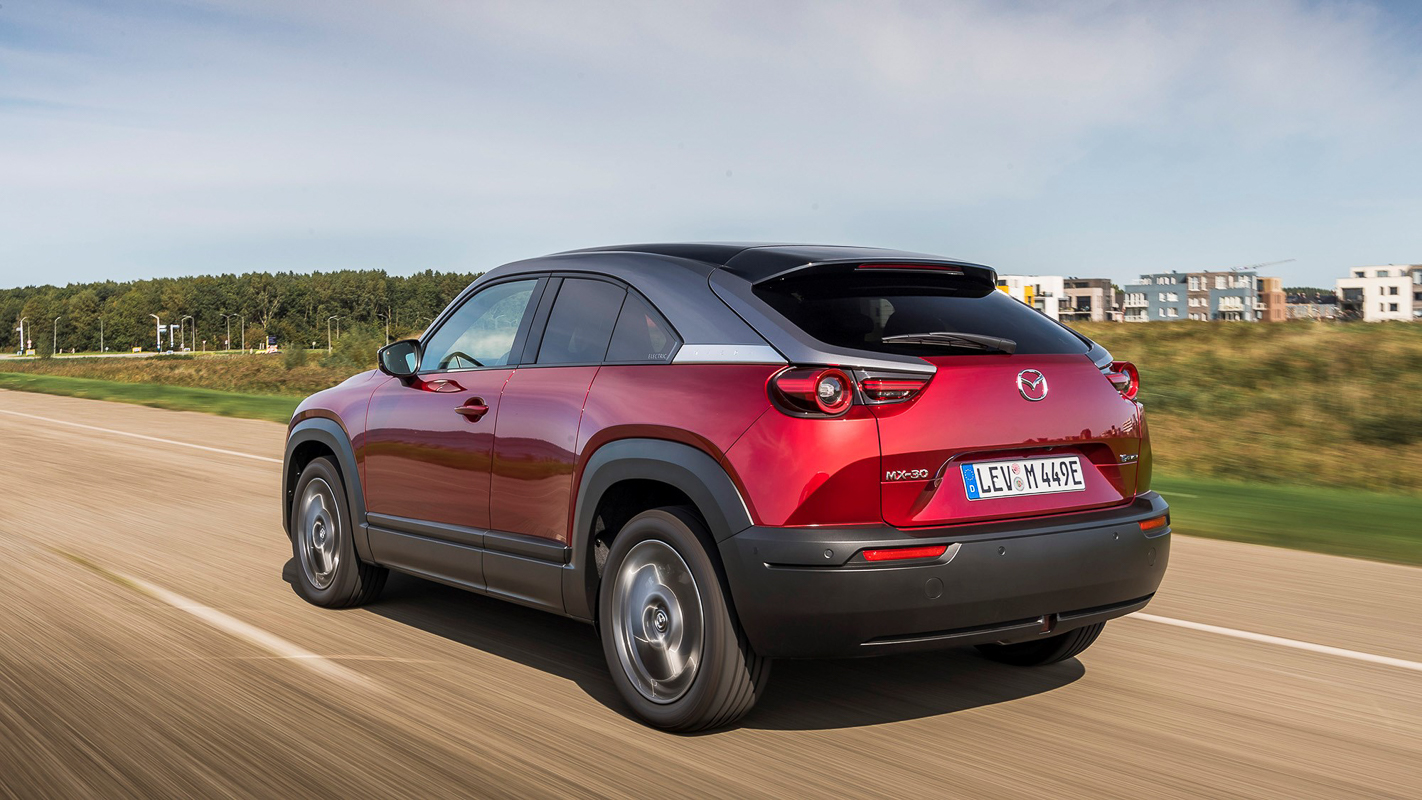
Mazda has a better idea than hiding people in there, apparently. Though exact details are unconfirmed, it’s definite that the empty space will be filled soon enough – and by a typically Mazda, Wankel rotary engine. This smooth, optimised range-extender could turn out to be the spec that gives the MX-30 real mass appeal, as long as the same masses understand that all the quirks of the RX-8 and forebears don’t apply here.
Japanese buyers will even be able to buy a conventionally-engined MX-30; in some ways, this really is the closest we’ll get to an MX-3 followup. As long as we’re not being denied an exquisite, tiny V6, the electric motor is plenty.
Why’s the battery so small?
It’s not small, it’s optimised. Actually, that’s not as mealy-mouthed as it sounds – there’s some very good logic behind the capacity. It’s enough for a 200-kilometre range (Mazda claim 260 kilometres of city driving), which – if it is achievable – is plenty for the average daily driving of commuters and families. It’s also easier to recharge fully on a home wallbox for the security of seeing the full ‘tank’.
Mazda’s justification is that most users don’t actually need a huge 75kWh battery, and making those big batteries involves a lot of raw materials and energy. Enough to significantly contribute to the embedded environmental cost of a car, which in turn affects how long your electric vehicle really takes to be better than a conventional car and its ongoing consumption and pollution.
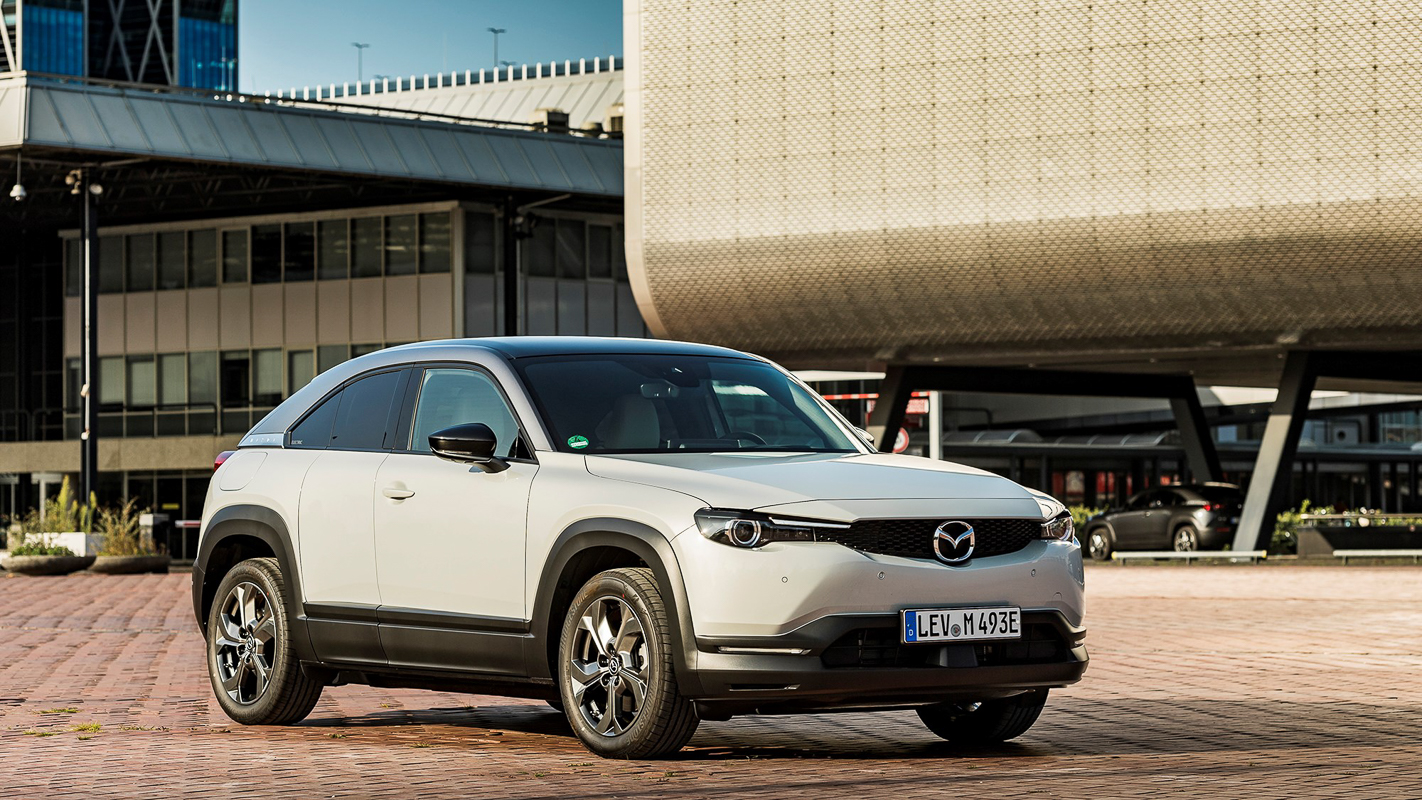
While not a scientific measure (your mileage may vary, literally), the smaller battery effectively halves the additional impact over a conventional car and, crucially, brings the ‘break even’ point forward to the stage where the initial owner of the car could see the benefit.
Most large-battery EVs will only give a return on that initial CO2 investment around the same time the conventional car is considered well-used and due for replacement.
But here’s the real surprise: The MX-30 does not drive like a typical electric car – and in the process, it doesn’t consume charge like a typical, hot-off-the-line EV either. Perhaps there’s more to this ‘smaller battery’ idea after all.
Driving the MX-30
Mazda is known for making cars that grow on you, as a driver, without necessarily screaming about their prowess externally. Even the RX-8 has hidden depths, should you try a good one, but it’s when you look to models such as the Mazda 6 that the differences are thrown into sharp relief.
That’s all traditional engineering, right? EVs are a different proposition entirely, all instant torque and iron-fist in a silent glove hilarity, until the charge runs out and you drive like the proverbial nun. Including a bit of praying.
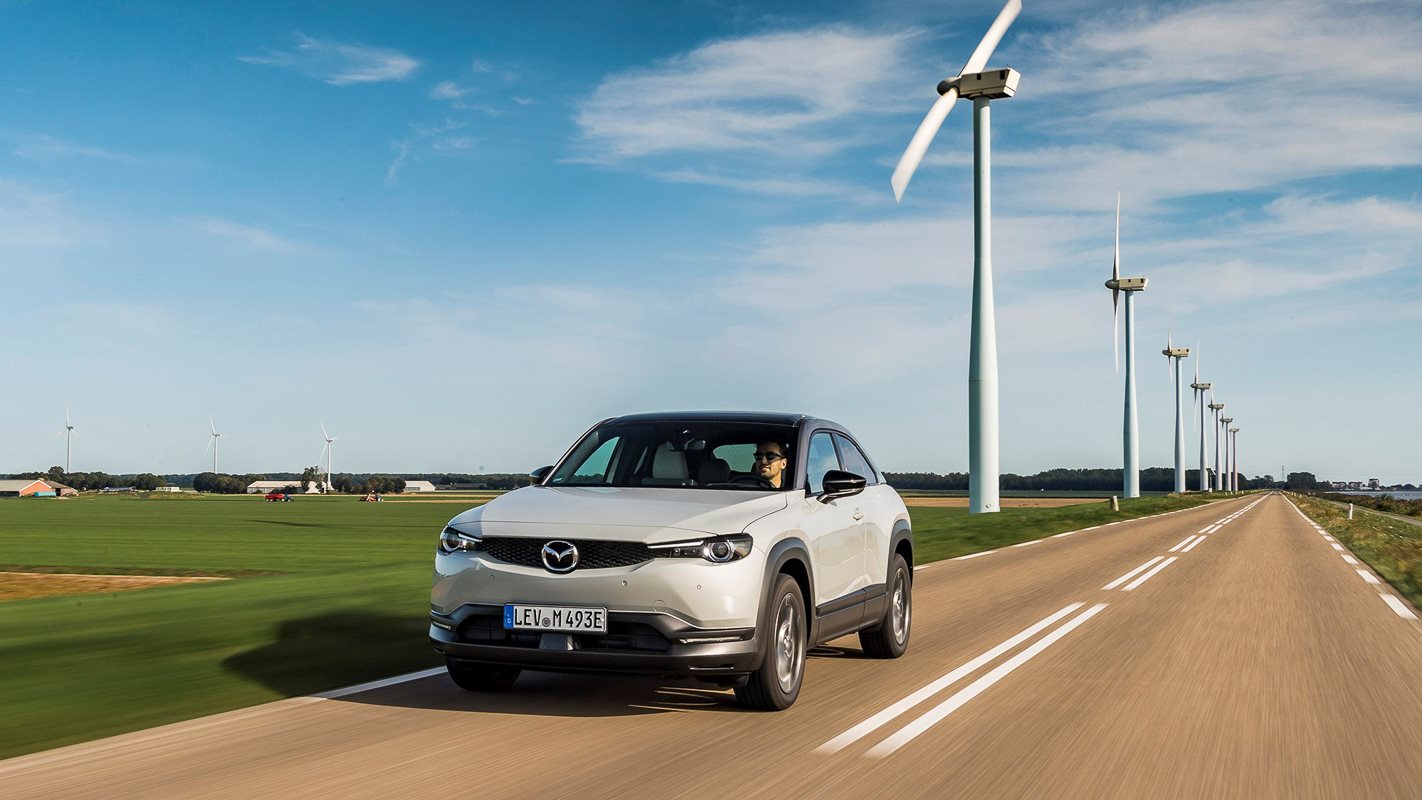
Just as the MX-30 is exactly the sort of pretty conventional, but quirky crossover you’d expect Mazda to produce even without batteries, Mazda’s aimed at making it drive like a petrol-engined car. There’s no whalesong-and-meditation in here, but a piped engine sound that’s gloriously reminiscent of a four-port RX-8 in third gear; tractable from urban speeds to motorway, revs ever increasing, and wonderfully satisfying. The illusion is aided by the MX-30’s limited top speed of 84mph, which helps preserve that range and keeps you almost legal – as well as being right about where third gear ends on a real RX-8.
Torque-map and touch points all contribute to this eerily familiar sensation. The motor control pedal (the one under your right foot – there’s little pretence of ‘one-pedal driving’ here, though it’s got the ability to come close) is a floor-hinged, organ style one that’s long, supportive and very, very progressive and controllable. It’s the kind of detail that contributed to the lazy, unhurried style of driving that a big old Mercedes would encourage, and it makes driving the MX-30 a real pleasure.
Even the gear lever is reassuringly mechanical. There are paddle shifts for regenerative braking, which defaults to a mid-way position and can be reduced or increased to suit, so the lever is purely a forward/reverse selector, but an unusual ‘move sideways to park’ adds an opportunity to engage with the car physically rather than pushing another button.
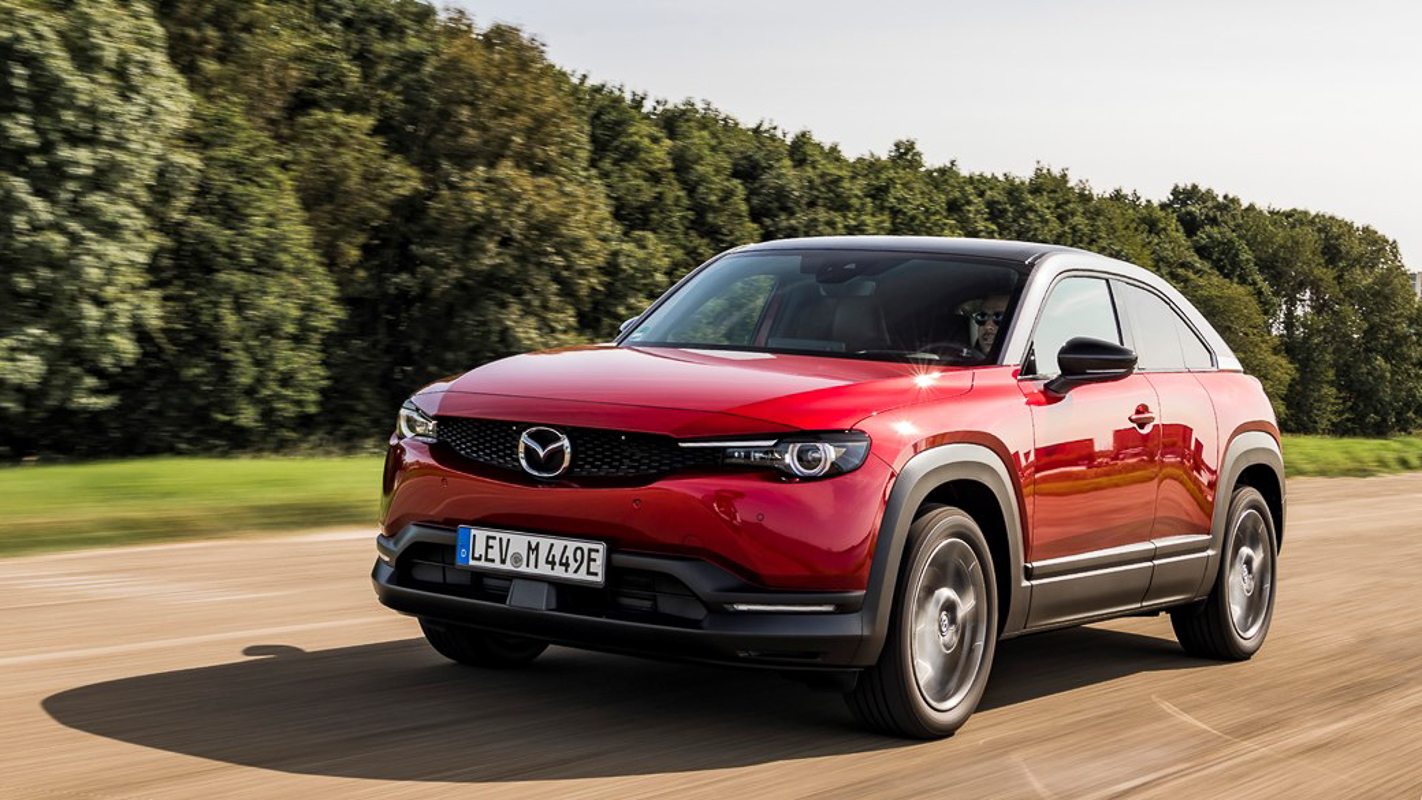
The parking brake’s electronic, though. Well, you can’t get everything right…
Encouraged by the artificial combustion and well-weighted, direct steering, you press on; the 0-100km/h time of 9.7 seconds feeling entirely reasonable. Bends are drawn in a smooth arc, with confident aim, and it takes a moment to remember that this is an electric car at all – there’s some torque-vectoring technology, but there’s pleasure to be found in absorbing the feedback and actually driving the car, not seeing how long the sensors can keep you on the road in denial of physics.
When your brain catches up, the difference in weight, in attitude, between the MX-30 and any other electric car in this price range dawns. There’s none of the stodge, the roly-poly cornering or aggressively controlled weight management ruining the ride. It’s basic stuff – just McPherson struts and torsion beam – but so were some of the most delightful hot-hatches ever made, and the MX-30 carries their spirit in its springs.
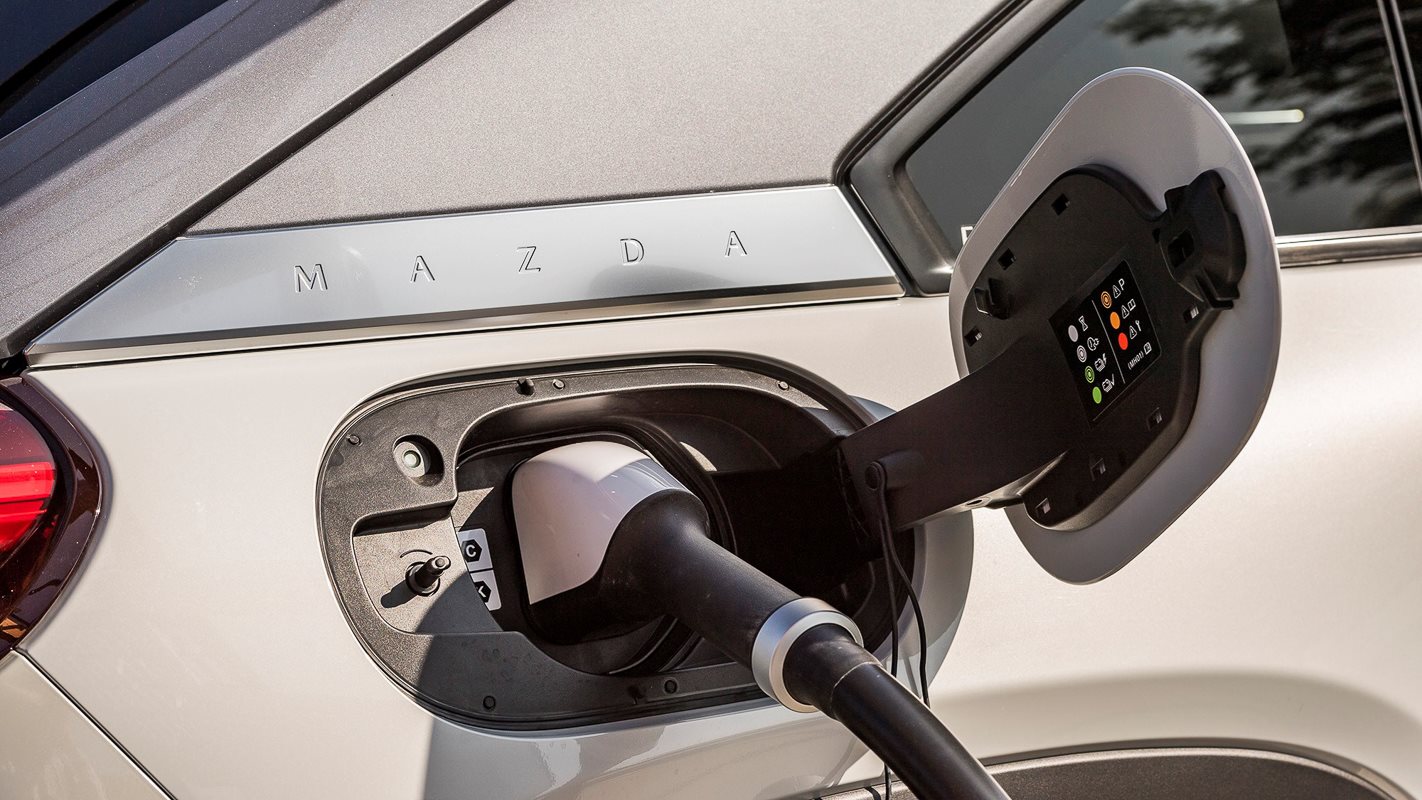
What about the passengers?
Mazda’s deployed a three-ring structure for the MX-30, surrounding the batteries and passenger compartment. It’s torsionally stiff and allows the suspension to compensate for the road and not the body. The result is a pleasant, predictable ride and good refinement.
That goes some way to compensating for the compromised side view out the rear passengers get while perched on the attractive, but quite shapelessly square rear bench. Being positioned quite upright below a tapering roofline isn’t as claustrophobic as you might expect, and sculpted seat backs mean two adults of average height can sit tandem, but you’re peering out of a porthole set in acres of black plastic.
Thankfully the top-spec GT Sport Tech comes with that most rare of options, a proper sliding sunroof, and the rear seats do sit a little higher than the front for a good view forward.
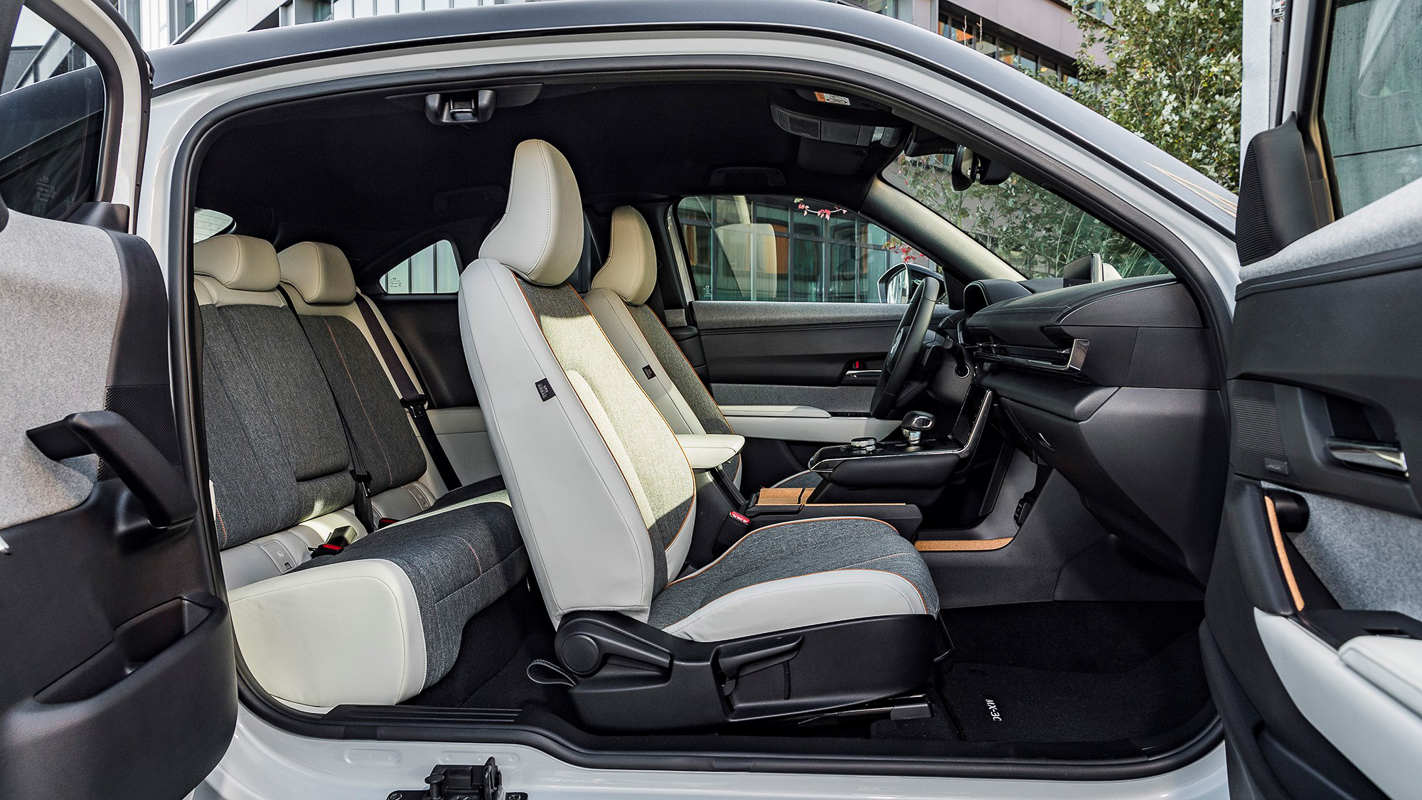
Smaller passengers are easier to deal with though, thanks to the flat-wide seats and Freestyle doors. Child seats are the right height and unobstructed, making this one of the easiest electric cars you’ll find if you’ve got infants or toddlers. There’s a reasonable 366-litre boot, too (you’ll lose a few litres if you have the Bose audio).
That square, padded seat structure is carried through to the front. Seats are very subjective, so first-person opinion here: I thought they were great, and suspect most people will appreciate the same qualities – chunky foam that’s like a firm memory foam mattress, well-shaped bolsters that hold you without being constricting, and just the right amount of lumbar support and width for shoulders. The materials are nice, too, but the most distracting thing in the MX-30 is the appearance of cork…

That natural material (much of the interior is vegan-friendly natural or environmentally-friendly recycled) is found not only on the centre console and simple, neat covered cupholders, it’s inside the door pull handle on the higher specifications too, where it’s a welcome tactile change from plastics.
Mazda hasn’t taken your pinboard and glued it to the dash – the cork is a special, high-density material that’s been treated and covered so it won’t absorb spills or age rapidly.
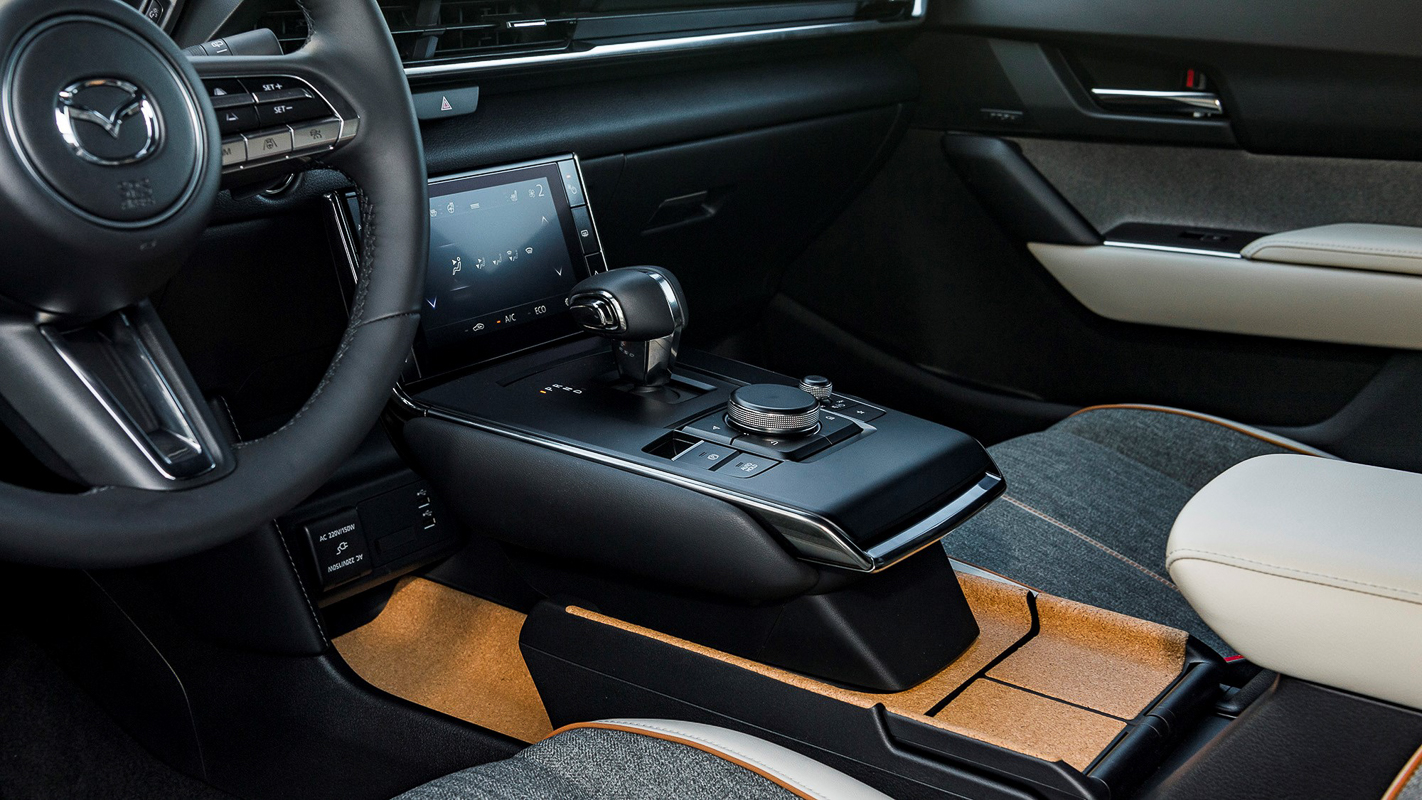
All MX-30’s are generously equipped, including a head up display and adaptive cruise control and lane keeping on all models; options really are all about convenience and personal preference, instead of being essentials for you to pay extra for.
Infotainment is fully-featured, with Apple CarPlay support included and Mazda’s intuitive rotary control. It’s supported by steering wheel controls and a clear, crisp dashboard display.
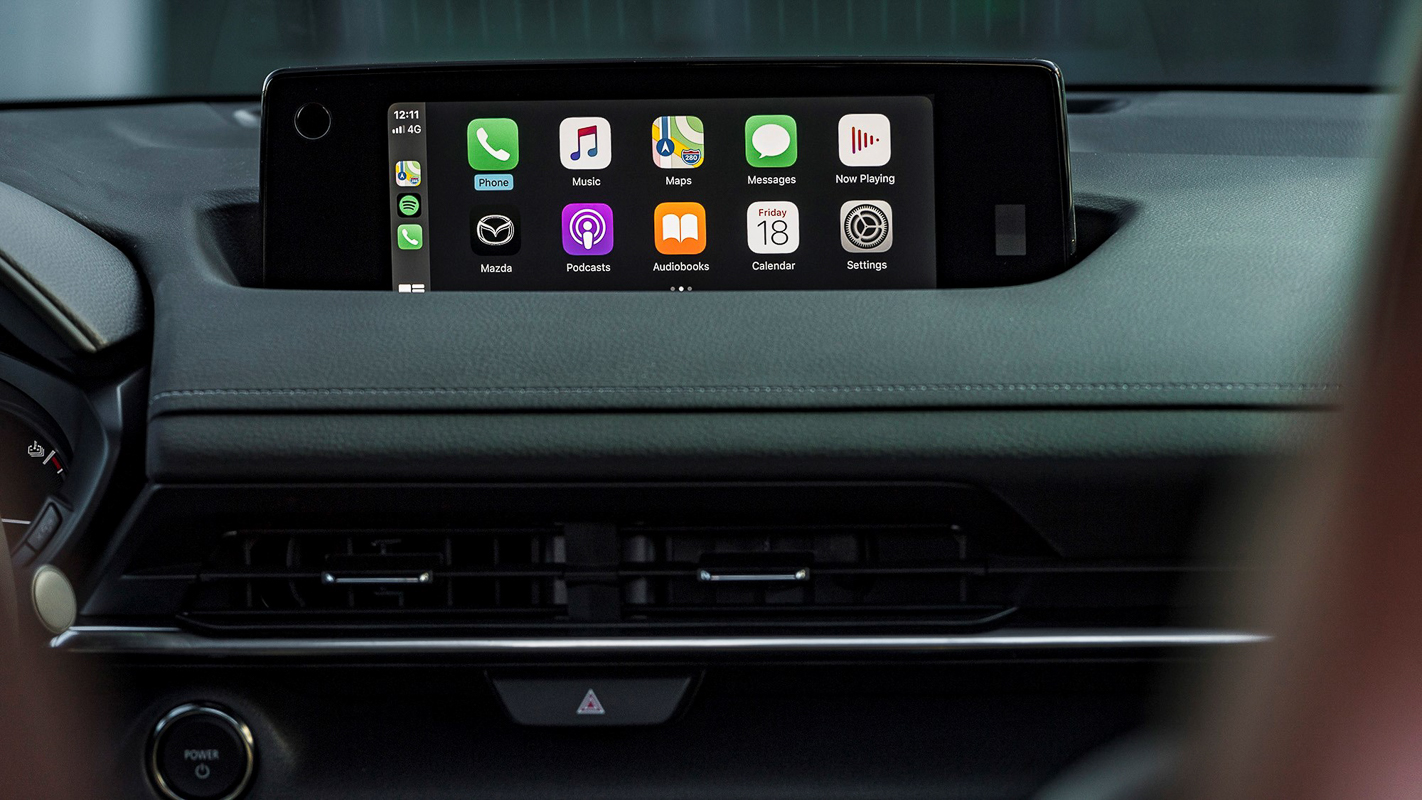
Verdict
The company is convinced 35.5 kWh batteries are currently the way to go, so you’ll have to wait for a Wankel-powered range extender MX-30 if you want more range. Initial impressions are that you won’t need it; the way it delivers and uses power, and has been carefully tuned to keep you involved rather than remote, means it’s more likely to deliver that full range.
The Mazda MX-30 is an affordable EV that has real appeal for drivers, too. It’s genuinely nice – not in a ‘OMG this is so fast’ way like a Tesla – it’s satisfying to drive and would be just as satisfying with a regular engine; most electric cars are a compromise we accept because of the halo effect of being green. It deserves to succeed.
This article was originally published at carmagazine.co.uk



